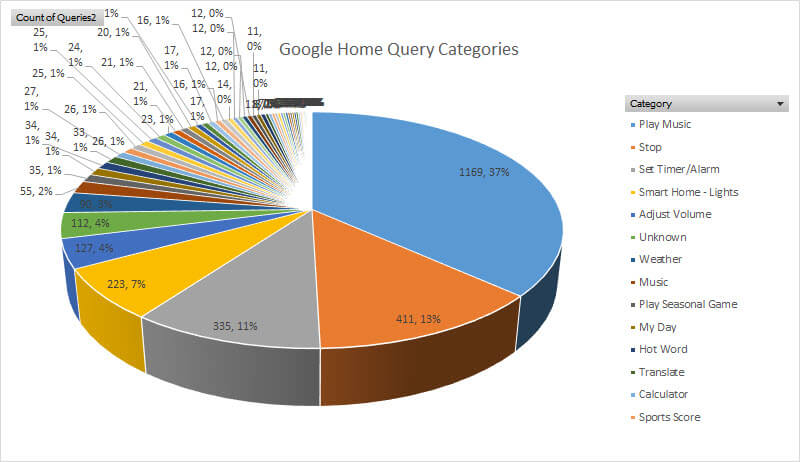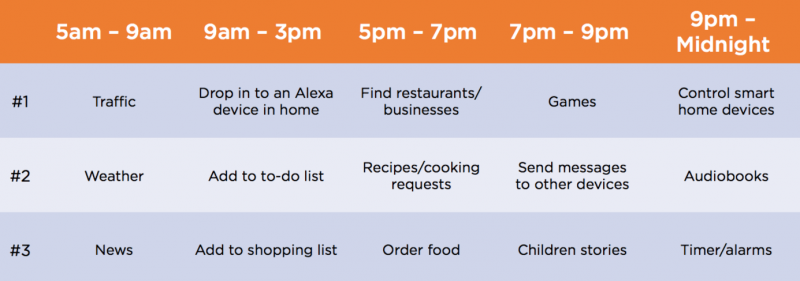Google I/O has claimed that in the U.S. on mobile apps and Android, one in five queries, or 20% of our queries, are voice queries. Amazon has sold over 100 million devices with Alexa built-in. Is voice search really dominating the search industry?
In this episode of the award-winning Here’s Why digital marketing video series, Eric Enge explains that voice search may not be as big as you think it is.
Don’t miss a single episode of Here’s Why. Click the subscribe button below to be notified via email each time a new video is published.
Resources
- Google I/O 2016 – Keynote
- Prepare for the voice revolution
- Survey: Smart speaker ownership steals time from smartphones, TV, radio
- What 3,000 voice search queries tell us about the ‘Voice Search Revolution
- Inside Baidu’s Plan To Beat Google By Taking Search Out Of The Text Era
- See all of our Here’s Why Videos | Subscribe to our YouTube Channel
Transcript
I’m going to talk to you about voice search today. I’m actually really passionate about voice search. I think it’s a cool thing and a developing opportunity that a lot of brands should be pursuing. But I do think that what people think about voice search, and how big this market is, is just way overdone. There are statistics out there that people quote all the time that suggest voice usage is already huge, but the reality is that those statistics are deceptive and, in some cases, completely misquoted.
There are three basic reasons why this is true. First of all, frequently cited metrics about voice search are inaccurate. And second of all, the nature of voice queries is quite different than the makeup of typed-in search queries at a search box in your web browser. And the third thing is personal assistant usage is only a small portion of total search. In any case, the reality is that there’s little real data published on just how much voice usage is going on in devices.
We do have the oft-quoted prediction about voice search by Andrew Ng, who at the time I believe was Chief Scientist at Baidu. What he said is that 50% of all search would be comprised of voice and image search queries. Most people actually attribute the quote to Comscore because they republished his quotation, but it was actually Andrew Ng. And most people said that he said 50% of all queries would be voice without noting the visual search part. So even that was completely misquoted. But the reality is we know now that this prediction was very optimistic and hence greatly exaggerated.
The second major stat that people cite is Sundar Pichai’s keynote at Google I/O, a few years back where he noted that in the U.S. on mobile apps and Android, one in five queries, or 20% of our queries, are voice queries and their share is growing. That’s a quote of what he said. 20% of queries already sounds like a big number, but let’s break down what he said a bit more. First of all, his quote did not reference queries that go to desktop devices where the voice query share is probably really close to zero. It also didn’t include queries via a browser on Android devices, and it may be that significantly more queries happen in regular browsers on Android devices than within the Google Assistant, for example. It also didn’t include Google queries that take place on iOS devices where installations in the Google Assistant are probably quite a bit lower. So, nearly all Google queries there happen via a browser. Once you think through all those factors, then maybe that 20% number is a lot less significant than it sounded at the time.
But I want to share a little more data. There’s a study that was done by Bryson Meunier, which was actually an analysis of 3000 voice queries done by his family. I’m going to show a screenshot here. This is an image from the study that Bryson did of that data. When you look at the data here between playing music, telling Google Home to stop, setting timers, home control, and adjusting the volume of things, that makes up 72% of all the queries.

In fact, there isn’t much trace of anything actionable for the great majority of businesses with websites unless you happen to run a music service.
So next, let’s look at a study from NPR. One of the interesting data points in this study is a dayparting graphic they created that shows how the usage of smart speakers by users varies throughout the day.

When you look at this, you see that they mostly aren’t really traditional search queries, similar to what we saw in Bryson’s data. And further, this is what Third Door Media’s Greg Sterling had to say about this data. “It’s a broad and diversified mix, though actions/skills discovery remains a problem on both Google Home and Alexa devices. People are not entirely sure about all the things smart speakers can do, and there’s no great discovery mechanism right now.” Thinking about what Greg was getting at there, he’s basically telling us that there’s a real information gap between the capabilities of these devices and the user’s understanding of what they do, which is also a factor here.
For one last data source, let’s look at a voice usage report from PWC. The PWC data further confirms that the way people are using voice commands, not voice searches, with their devices, is to tell those devices to do things for them, not quite the same way that we use search engines when we go to a browser.
So cumulatively, these three different sources tell us that the voice revolution definitely hasn’t taken over yet. So, let’s take a moment and talk about what the key obstacles are to a broader level of adoption of voice, including this shift to more traditional voice queries. First of all, while the reported accuracy of speech recognition engines is the same or maybe even a little better than humans (around 95%), the types of errors that happen with voice queries are often quite different and very frustrating than the nature of human errors, and humans are less tolerant of those errors.
The next major issue is that the voice systems really aren’t good at managing sustained conversations. So, what happens is that users might want to say something, and then they might want the next thing they say to build on what they said before. But the devices aren’t really good at tracking and remembering what’s happened and maintaining what we might call a cognitive conversation.
Ultimately, as Greg Sterling says, users do not understand the wide range of capabilities that personal assistants offer. Those capabilities aren’t at the levels that users really like to see, and there’s a lot of work that needs to be done to improve the quality of voice interaction between humans and devices. All three of these areas need to improve for voice to realize its full potential. These improvements are coming, and we will get there, but it will take some time.
Don’t miss a single episode of Here’s Why. Click the subscribe button below to be notified via email each time a new video is published.
See all of our Here’s Why Videos | Subscribe to our YouTube Channel


Thanks for the breakdown. I have tested results from Alexa and Google regarding my main business line which soccer goalkeeper gloves. Neither produced objective results or recommendations. The results where either broad definitions of keywords or recommendations that they had in their market place. Voice should be part of all our SEO efforts but just part of the mix. The algorithm’s from all the voice leaders will be smart enough if we focus on the customer experience.